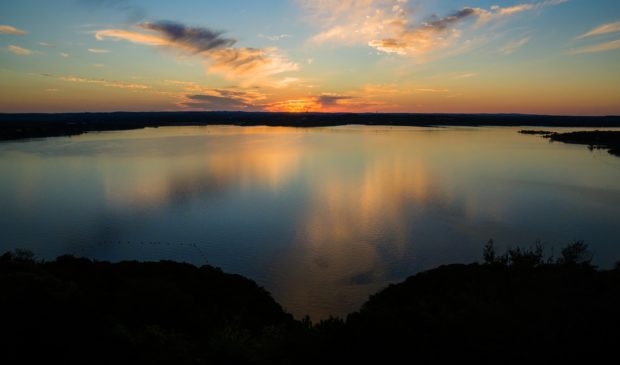To conserve water amid warming climate, city envisions major underground storage system
Wednesday, November 14, 2018 by
Jack Craver For four years, volunteer members of the Integrated Water Resource Task Force have been crafting a plan to conserve Austin’s water supply over the next century.
While experts have long warned that a warming climate, coupled with a growing population, poses a serious risk to the world’s water supply, the weeklong boil notice that Austin endured last month has made residents here particularly attuned to the issue.
At a City Council work session Tuesday, members of the task force, along with officials from Austin Water, the municipal water utility, described the Water Forward plan as a path to dramatically increase the conservation of drinking water.
Sharlene Leurig, a member of the Austin Integrated Water Resource Planning Community Task Force, called the panel’s proposal “the most important water plan that has been produced in the United States.”
The plan, Leurig explained, rejects the idea that “for a city to grow, it must take water resources from other areas.” Instead, the task force has prioritized making Austin self-sufficient so that it doesn’t need to buy water from neighboring municipalities. Self-reliance, Leurig said, offers both economic and environmental benefits as well as greater reliability, since the city can be assured of its own water supply regardless of political events.
One of the pillars of the water conservation plan is an aquifer storage and recovery system, in which the city injects billions of gallons into an underground aquifer for later use. Other cities, including San Antonio, already have such systems in place, explained Austin Water Director Greg Meszaros.
“When you have a drought, you have a strategic reserve of fresh drinking water,” Meszaros said. That water is “safe from evaporation” and from the disruption caused by the types of storms that jeopardized the potability of the city’s drinking water last month.
The main challenge global warming poses to the water supply comes from the simple fact that higher temperatures lead to more water evaporating. It’s already the case that the city loses more drinking water to evaporation than to consumption, said Meszaros.
Although the water utility did not raise rates this year and has committed to no rate increases in the next two years, Meszaros said creating an aquifer recovery system will likely require spending hundreds of millions of dollars in capital costs, and could impact rates. He is optimistic that the utility may be able to get financing at lower than average interest rates through a state program.
Meszaros said that the utility already has money in its budget available to begin planning the ASR, which he envisions being completed in the mid-2030s or 2040.
Other features of the water plan include new conservation measures aimed at reducing the use of drinking water for non-drinking uses. Meszaros pointed to the new Central Library, a model of environmental planning. Only 10 percent of its water consumption is drinking water, he said. The rest comes from on-site “reuse water” derived from rainwater, stormwater or water condensation.
The task force also recommended that the city make changes to its Land Development Code aimed at encouraging water conservation with new development, such as the use of “dual plumbing” systems where potable water is separated from reclaimed water that is used for all non-drinking purposes.
Council Member Delia Garza, while stressing her appreciation for conservation, worried that new regulations could drive up housing costs, particularly for large multifamily developments that serve low-income people who are increasingly unable to afford housing in Austin.
Garza noted that Meszaros had highlighted the kinds of innovative conservation practices that can be seen in San Francisco, where the median home price is now more than $1 million.
“San Francisco is great, but I want people to be able to afford to live in Austin,” said Garza.
Both Garza and Council Member Alison Alter warned that the local workforce may not be ready to install new types of plumbing systems.
“We don’t have the plumbers who know how to do this work,” said Alter.
Council Member Greg Casar said that while he, too, is sensitive to the impact of new regulations on housing, it needs to be balanced with the necessity to conserve water, an effort he described in existential terms: “We are made of water.”
The Austin Monitor’s work is made possible by donations from the community. Though our reporting covers donors from time to time, we are careful to keep business and editorial efforts separate while maintaining transparency. A complete list of donors is available here, and our code of ethics is explained here.
You're a community leader
And we’re honored you look to us for serious, in-depth news. You know a strong community needs local and dedicated watchdog reporting. We’re here for you and that won’t change. Now will you take the powerful next step and support our nonprofit news organization?





